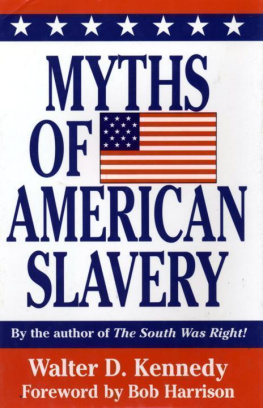ADVANCE PRAISE FOR
INVISIBLE SLAVES:
The Victims and Perpetrators
of Modern-Day Slavery
This is a deeply moving book. Factual and calm, Kurt Hauser issues a carefully documented, urgent wake-up call. Slavery remains shockingly pervasive around the world in the 21st century, even in Western countries. With this book, Hauser helps slaverys invisible victims to be heard.
Ayaan Hirsi Ali, Research Fellow at the Hoover Institution, Stanford University, and founder of the AHA Foundation
Invisible Slaves recounts in readable prose and riveting detail the pervasiveness of contemporary slavery, found beyond just developing lands in our own Facebook world. This tour dhorizon blends numerical data with tragic vignettes of individuals swallowed up in shadowy and wicked enslavement. By writing this unflinching account Kurt Hauser opens our consciousness, our minds, and our hearts to a present-day evil too often ignored.
Thomas H. Henriksen, Senior Fellow at the Hoover Institution
 | With its eminent scholars and world-renowned library and archives, the Hoover Institution seeks to improve the human condition by advancing ideas that promote economic opportunity and prosperity, while securing and safeguarding peace for America and all mankind. The views expressed in its publications are entirely those of the authors and do not necessarily reflect the views of the staff, officers, or Board of Overseers of the Hoover Institution. |
www.hoover.org
Hoover Institution Press Publication No. 684
Hoover Institution at Leland Stanford Junior University,
Stanford, California 94305-6003
Copyright 2017 by the Board of Trustees of the Leland Stanford Junior University
All rights reserved. No part of this publication may be reproduced, stored in a retrieval system, or transmitted in any form or by any means, electronic, mechanical, photocopying, recording, or otherwise, without written permission of the publisher and copyright holders.
For permission to reuse material from Invisible Slaves: The Victims and Perpetrators of Modern-Day Slavery, by W. Kurt Hauser, ISBN 978-0-8179-2105-7, please access www.copyright.com or contact the Copyright Clearance Center, Inc. (CCC), 222 Rosewood Drive, Danvers, MA 01923, 978-750-8400. CCC is a not-for-profit organization that provides licenses and registration for a variety of uses.
Efforts have been made to locate the original sources, determine the current rights holders, and, if needed, obtain reproduction permissions. On verification of any such claims to rights in the articles reproduced in this book, any required corrections or clarifications will be made in subsequent printings/editions.
Cataloging-in-Publication Data is available from the Library of Congress.
ISBN 978-0-8179-2105-7 (pbk. : alk. paper)
ISBN 978-0-8179-2106-4 (epub)
ISBN 978-0-8179-2107-1 (mobi)
ISBN 978-0-8179-2108-8 (PDF)
To Julie
Contents
Preface
M ATUL WAS 17 YEARS OLD, working as a housekeeper in her native Indonesia, when a cousin of her employers offered her a job in America. Matul jumped at the opportunity: Who doesnt want to come to the U.S.? It seemed like a great opportunity at the time.
As soon as she arrived at the airport in the United States, her new employer confiscated her passport. Over the next two years, Matul was forced to work seven days a week with no pay. Her employers beat her when she protested and told her that, because she lacked a passport, she would be arrested and raped in prison if she ever tried to escape. Matul had become an invisible slave.
She was threatening me, saying that if I ran away, the police would arrest me because I didnt have my passport, and that Id be thrown in jail where Id be raped, said Matul, who didnt speak any English at the time.
Finally, after years of suffering and managing to cobble together enough English, Matul was able to slip a note to a nanny working at a nearby home: Please help me.
Matul is a modern-day slave.
Matul was not a faceless victim on a faraway shore. She had arrived in the United States legally and was subjected to these crimes in the middle of one of Americas most affluent neighborhoods in Southern California. According to the Walk Free Foundations 2016 Global Slavery Index, Matul was just one of an estimated 57,700 people subjected to slavery in the United States.
This books purpose is simple: to bring awareness to the global problem of modern-day slavery. The legacy of slavery haunts modern-day Western Civilization and especially the United States. Indeed, critics of the West cite slavery among the many evils spawned by Western Civilization in general and the United States in particular. But nothing could be further from the truth. Slavery existed before the discovery of the New World and before the origins of Western Civilization. The abolition movement is Western in origin and sprung out of the enlightenment in Europe. Great Britain and the United States were the first countries to ban the trade in slaves and the West led the globe in enacting laws prohibiting the institution of slavery. Yet slavery continues to exist in virtually every country of the world. Thus, slavery is not a problem of the past, but a present-day scourge.
Today, according to the Walk Free Foundations Global Slavery Index, a staggering 45.8 million people in the world live under the crushing bonds of slavery: forced, coerced, tricked, or otherwise compelled against their wills to perform involuntary acts, sexual or otherwise, without just remuneration. Slavery generates revenue in excess of $150 billion annually according to the International Labour Organization, a United Nations agency. In terms of global criminal activity, human trafficking ranks second only to the illicit drug trade in annual dollar revenue, according to the United Nations Office on Drugs and Crime.
Modern day slavery estimated by gender: 55% women and girls; 45% men and boys
Understanding where slavery came fromand how deeply the institution is woven into the fabric of human historyis vital to understanding the differing contexts in which slavery operates around the world today. This book begins with a brief overview of slaverys history and a discussion of its different meanings and practicalities over time before delving into a region-by-region discussion of modern-day slavery. It also addresses the responses that various countries are making to combat slavery. Many sources exist (and are cited heavily within this book) that take a close look at the extent of slavery around the world. It is not the intent of this book to cover all countries; instead, this work will highlight what are deemed to be the most problematic and indicative cases in order to impress upon the reader the urgency and ubiquity of the global problem.
Modern day slavery estimated by profits: Forced sexual exploitation: $99 billion Forced labor exploitation: $51 billion
Throughout the book are first-hand stories of modern-day slaves and trafficking, included to personalize the issue and remind the reader that as many as 46 million human beings will wake up today to a life of forced labor, violence, sexual assault, and dehumanization under the yoke of slavery.











